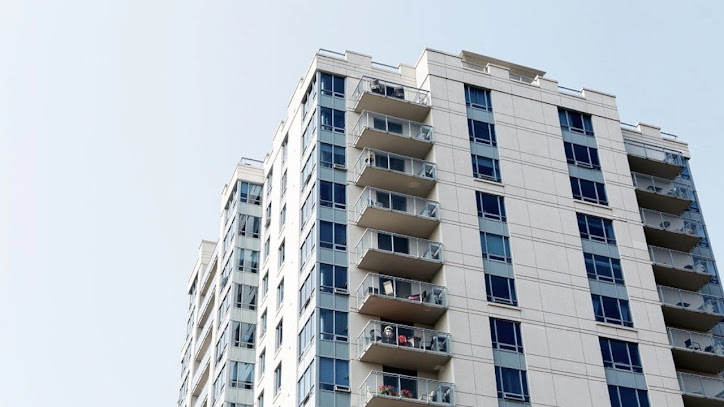Termite and Moisture Inspection: A Comprehensive Guide
If you're a homeowner, you know how important it is to keep your home in good condition. One way to ensure that your home is in good condition is to conduct regular termite and moisture inspections. Termites are destructive pests that can cause significant damage to your home's structure, while moisture can lead to mold growth and other issues. In this article, we'll explore the importance of termite and moisture inspections, how they're conducted, and answer some frequently asked questions.
Understanding Termite and Moisture Inspection Termite and moisture inspections are essential for homeowners who want to keep their homes in good condition. Termites are pests that feed on wood, and if left unchecked, they can cause significant damage to your home's structure. Moisture, on the other hand, can lead to mold growth, which can cause health issues for you and your family. A termite and moisture inspection will help you identify any potential problems before they become major issues.
Conducting the Inspection Termite and moisture inspections are typically conducted by a licensed professional. During the inspection, the inspector will look for signs of termites, such as mud tubes, damaged wood, and termite droppings. They will also look for signs of moisture, such as water stains, mold, and mildew. If any issues are found, the inspector will provide recommendations for treatment and repair.
You might also like to read this : Termite And Moisture Inspection: Everything To Know In 2024
Key Takeaways
- Regular termite and moisture inspections are essential for homeowners who want to keep their homes in good condition.
- During the inspection, the inspector will look for signs of termites and moisture, and provide recommendations for treatment and repair if any issues are found.
- Conducting regular termite and moisture inspections can help you identify potential problems before they become major issues.
Understanding Termite and Moisture Inspection
When it comes to protecting your property from termite damage, regular inspections are crucial. Termites can cause significant structural damage, and early detection is key to preventing costly repairs. In this section, we will discuss the importance of termite and moisture inspections, the identification of termite species, and how moisture can be a risk factor for infestation.
The Importance of Inspections
Regular termite inspections are essential to prevent termite damage. A professional inspector can identify any signs of termite activity and provide recommendations for treatment and prevention. According to Forbes, a thorough inspection should cover the foundation, attic, crawl space, fences, piles of wood, and any other potential termite gathering places. Inspections are especially important during real estate transactions, as lenders often require them.
Identification of Termite Species
There are several species of termites, and each has its unique characteristics and behaviors. Identifying the species of termite present is crucial in determining the best course of treatment. According to Home Inspection Insider, a termite inspector will look for signs of termite activity, such as shelter tubes along foundation walls. They will also use a moisture meter to check the wood moisture levels and recommend inspection by a building contractor if structural damage from termites is found.
Moisture as a Risk Factor for Infestation
Moisture is a significant risk factor for termite infestation. Termites thrive in moist environments and are attracted to areas with high humidity or water damage. According to HomeCore Inspections, addressing moisture issues is crucial in preventing termite infestation. Homeowners should schedule routine termite inspections to catch any signs of infestation early on and address any moisture issues promptly.
In short, regular termite and moisture inspections are crucial in protecting your property from termite damage. A professional inspector can identify any signs of termite activity, determine the species present, and provide recommendations for treatment and prevention. Addressing moisture issues is also crucial in preventing termite infestation.
Conducting the Inspection
When conducting a termite and moisture inspection, there are several important steps you should take to ensure a thorough and accurate assessment of the property. Here are the key elements of the inspection process:
Pre-Inspection Preparation
Before beginning the inspection, it is important to gather all necessary tools and equipment and to prepare the property for inspection. This includes removing any clutter or debris that may obstruct access to key areas, such as the attic or crawl space. You should also ensure that all utilities, such as electricity and water, are turned on and accessible.
Tools and Techniques
During the inspection, you will use a variety of tools and techniques to identify signs of termite and moisture damage. These may include:
- Moisture meter: A moisture meter is used to measure the moisture content of wood and other materials. High levels of moisture can indicate the presence of a moisture problem, which can attract termites and other pests.
- Flashlight: A flashlight is used to illuminate dark areas, such as crawl spaces and attics, where termites and other pests may be hiding.
- Probe: A probe is used to test the integrity of wood and other materials. Soft or hollow wood can indicate the presence of termites or other pests.
- Visual inspection: A visual inspection is used to identify signs of termite and moisture damage, such as mud tubes, termite wings, and water stains.
Interpreting Inspection Results
Once the inspection is complete, you will need to interpret the results to determine whether there is evidence of termite or moisture damage. If damage is found, you will need to determine the extent of the damage and recommend appropriate treatment options.
Post-Inspection Procedures
After the inspection is complete, it is important to provide the property owner with a detailed report of the findings. This report should include a description of any damage found, as well as recommendations for treatment and prevention. You should also provide the property owner with a list of any repairs or maintenance tasks that need to be performed to prevent future termite and moisture damage.
By following these steps and using the appropriate tools and techniques, you can conduct a thorough and accurate termite and moisture inspection that will help protect the property from damage and ensure the safety and well-being of its occupants.
Frequently Asked Questions
How much does a termite treatment typically cost?
The cost of termite treatment can vary greatly depending on the severity of the infestation and the type of treatment required. According to Forbes, the average cost of termite treatment ranges from $500 to $2,500. However, this cost can increase significantly if the infestation is severe or if additional treatments are required.
What is the duration of a professional termite inspection?
The duration of a professional termite inspection can vary depending on the size of your property and the extent of the inspection required. According to Today's Homeowner, a typical termite inspection can take anywhere from 30 minutes to 2 hours. However, this can vary depending on the size and complexity of your property.
What should I expect to pay for a termite and moisture inspection?
The cost of a termite and moisture inspection can vary depending on the size of your property and the extent of the inspection required. According to This Old House, the average cost of a termite and moisture inspection ranges from $100 to $300. However, this cost can increase depending on the size and complexity of your property.
What is included in a termite and moisture inspection checklist?
A termite and moisture inspection checklist typically includes a thorough examination of the interior and exterior of your property. According to Home Inspection Insider, a professional inspector will look for signs of termite activity, such as mud tubes, termite droppings, and damaged wood. They will also check for signs of moisture, such as water stains and mold growth.
How should I prepare my home for a termite inspection?
To prepare your home for a termite inspection, you should make sure that all areas of your property are accessible. This means moving any furniture or other items that may be blocking access to walls, floors, and ceilings. You should also clear any clutter from the interior and exterior of your property to make it easier for the inspector to perform a thorough examination. According to Inspecticore Home Inspections, you should also make sure that all utilities are turned on and that any pets are secured or removed from the property during the inspection.
What level of moisture in wood is conducive to termite activity?
Termites are attracted to damp wood, so any level of moisture in wood can be conducive to termite activity. However, according to Purdue University, wood with a moisture content of 20% or higher is most susceptible to termite infestation. To prevent termite activity, it is important to keep your property well-ventilated and to address any moisture issues as soon as they arise.




Comments
Post a Comment